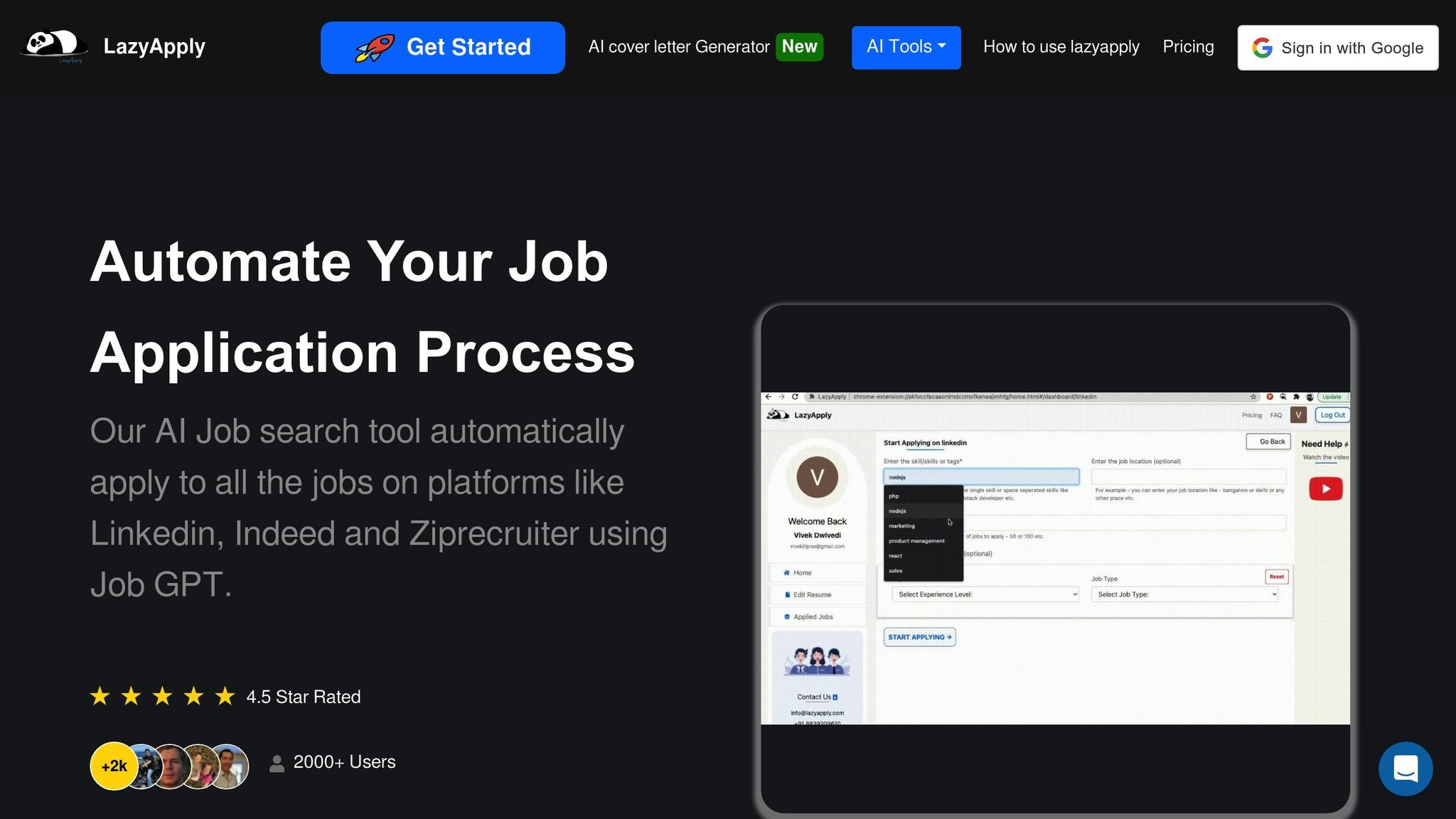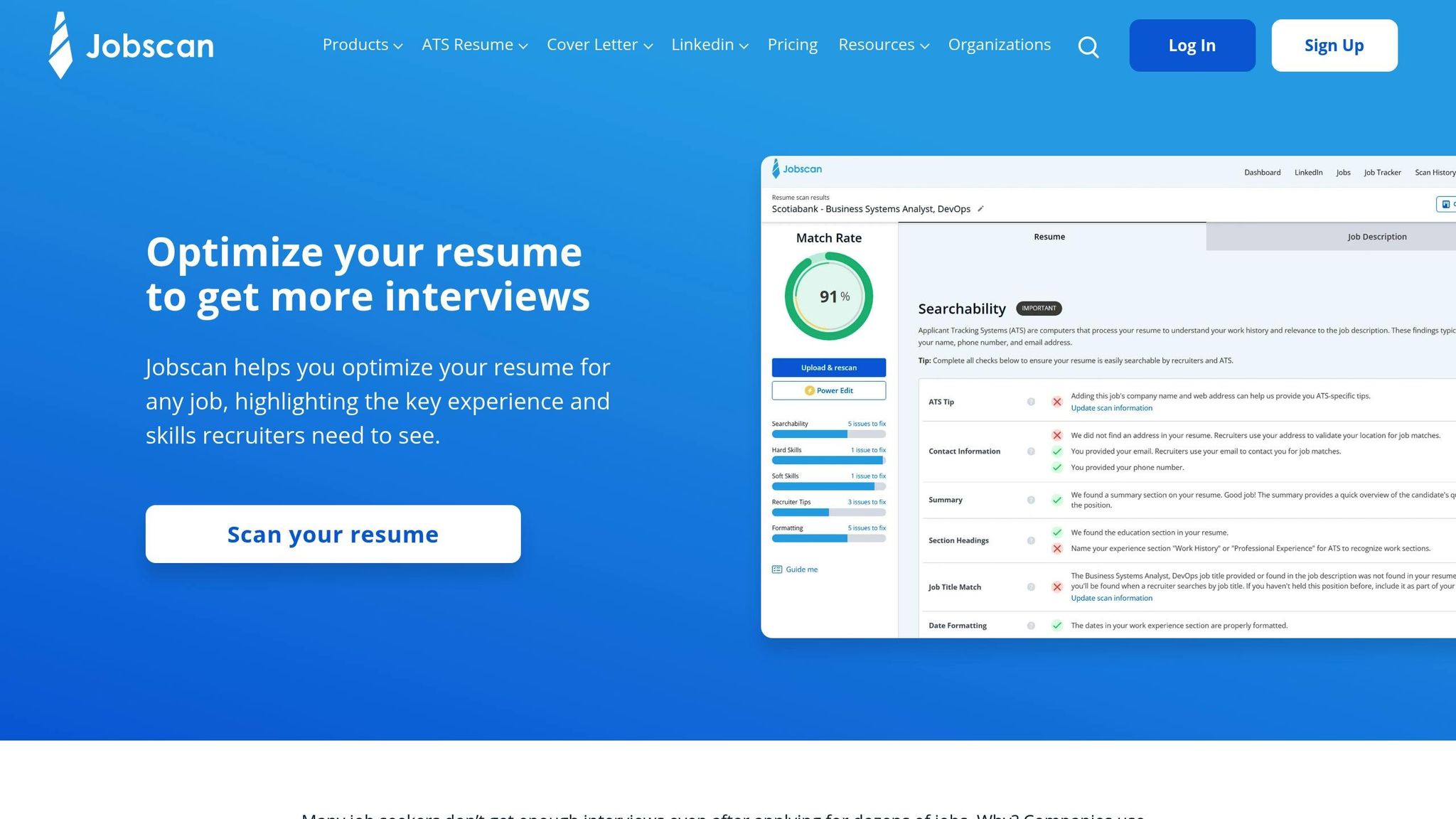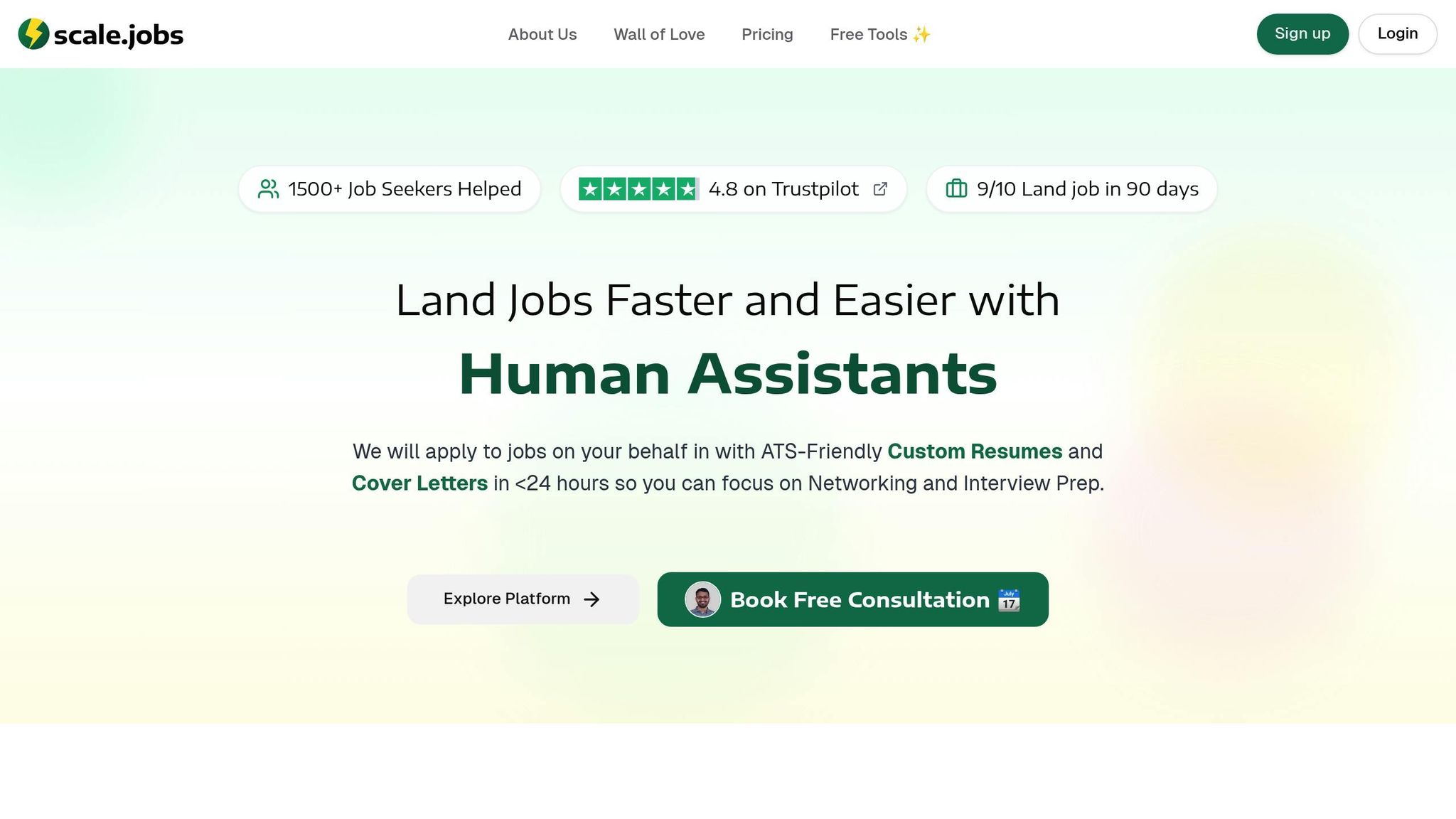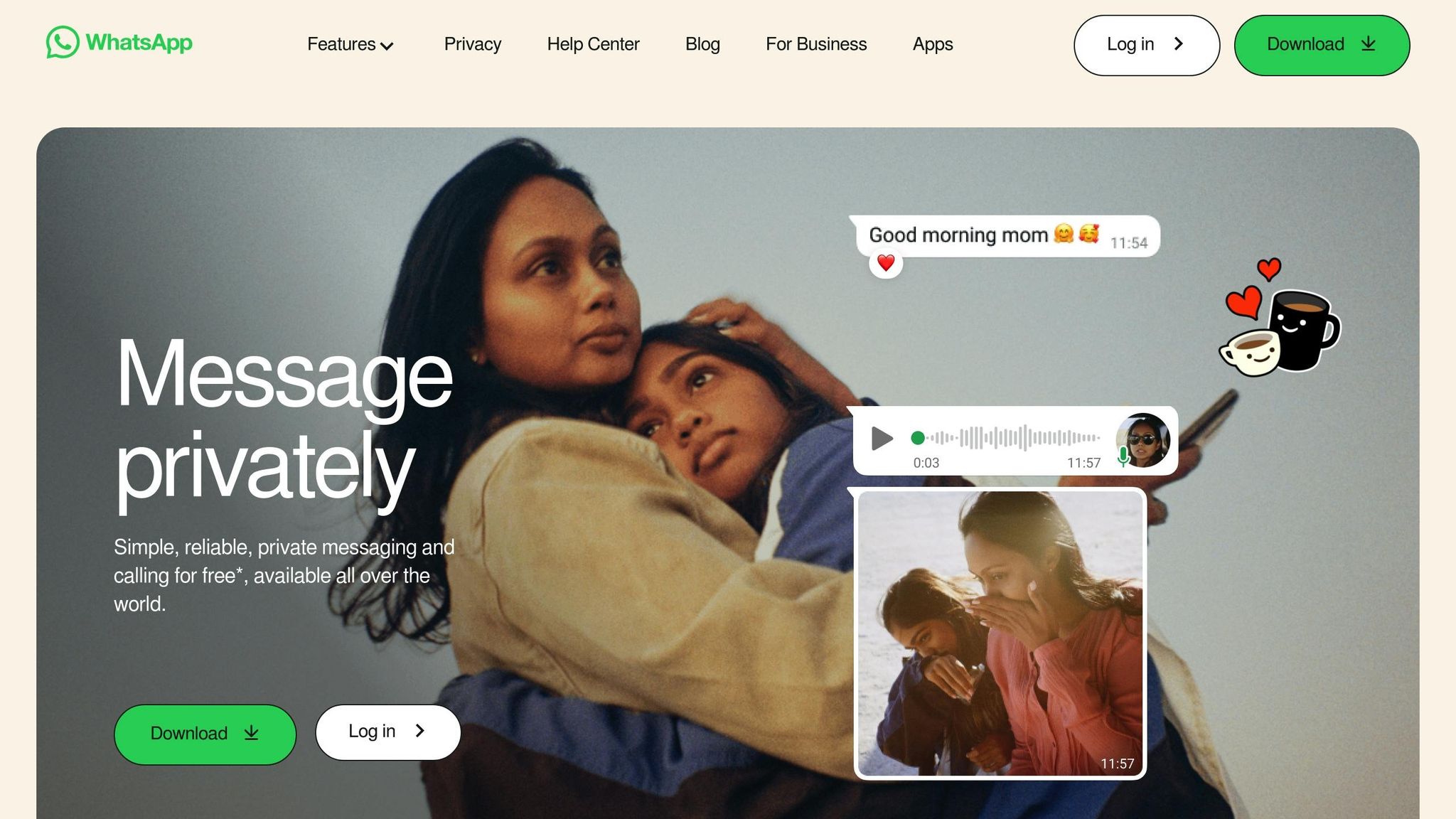Get Hired Faster: Why 1,000 Human Apps Trump 10,000 Bots
Human-crafted job applications significantly outperform automated submissions, leading to higher callback rates and better job search results.

Want better job search results? Focus on quality, not quantity.
Human-crafted job applications consistently outperform automated bots. Here’s why:
- Higher Success Rates: Manual applications see callback rates of 4–6%, compared to less than 1% for automated tools.
- Tailored Applications: Humans create personalized resumes and cover letters, addressing specific job requirements. Bots rely on generic templates.
- Better ATS Compatibility: Well-formatted, human-written resumes pass Applicant Tracking Systems (ATS) more effectively than bot-generated ones.
- Avoid Red Flags: Bots often trigger detection algorithms, harming your reputation with recruiters.
- Transparency: Human-powered services like scale.jobs provide proof of submission, real-time updates, and accountability.
Quick Comparison
| Feature | LazyApply (Bots) | scale.jobs (Human VA) |
|---|---|---|
| Callback Rate | <2% | 47% |
| Resume Quality | Generic Templates | Custom Per Job |
| Application Accuracy | Prone to Errors | Verified |
| Transparency | Minimal | Proof-of-Work Screenshots |
Bottom Line: Sending 1,000 personalized applications crafted by humans delivers far better results than 10,000 generic, bot-driven submissions. Focus on quality to land interviews faster.
How to Get More Responses to Your Job Applications: 5 Top Tips
Why Bot Applications Don't Work: The Automation Problem
Let’s dive deeper into why automated job applications often fall short compared to human-crafted ones. While bots promise to save time by submitting applications en masse, they often fail where it matters most: relevance and quality. This inefficiency becomes even clearer when you consider the challenges of ATS compatibility and the lack of trust they inspire among recruiters.
Low ATS Pass Rates and Generic Applications
There’s a popular claim that 75% of resumes get rejected by Applicant Tracking Systems (ATS), but this figure isn’t backed by reliable data. In truth, most applications are still reviewed by human recruiters. In fact, one recruiter reported that as many as 90–95% of applications are manually reviewed.
The problem with bot-generated applications lies in their use of generic templates, which often lead to formatting issues that ATS systems struggle to process. For example:
- 76% of resumes with multi-column layouts fail ATS parsing.
- Resumes with unprofessional email addresses face high rejection rates.
- 88% of resumes featuring photos are immediately rejected in the U.S..
On the other hand, well-crafted resumes - tailored for specific roles, with clean formatting - are far more likely to pass ATS checks and grab the attention of human reviewers.
Bot Detection Risks That Hurt Your Reputation
Formatting issues aren’t the only hurdle. Many hiring platforms, like LinkedIn and Greenhouse, have developed sophisticated algorithms to detect automated submissions. When bots are flagged, candidates run the risk of damaging their reputation.
Recruiters can easily spot red flags in bot-driven applications, such as:
- Generic cover letters and resumes lacking specific details.
- Submissions that arrive seconds after a job is posted.
These signs not only reduce the likelihood of a callback but can also leave a negative impression on hiring managers, potentially harming future opportunities.
Case Study: Bot Applications vs. Human Applications
A side-by-side comparison of LazyApply’s bot-driven approach and scale.jobs’ human-powered method showcases the stark contrast in results:
| Feature | LazyApply (Bots) | scale.jobs (Human VA) |
|---|---|---|
| Callback Rate | <2% | 47% |
| Resume Quality | Generic Templates | Custom Per Job |
| Application Accuracy | Prone to Errors | Human-Verified |
The numbers speak for themselves. Human-crafted applications, with a 47% callback rate, clearly outperform the generic submissions generated by bots. Human assistants take the time to tailor each application, using relevant keywords from job descriptions and industry-standard language.
Additionally, they ensure documents are formatted for maximum ATS compatibility and readability by sticking to best practices, such as:
- Using clean fonts like Arial, Calibri, or Times New Roman (10–12pt).
- Organizing content into clear sections like "Work Experience", "Education", and "Skills."
- Maintaining consistent spacing and simple, single-column layouts.
All of this adds up to a more polished and professional application that stands out to both ATS systems and human recruiters.
The takeaway? Fewer, high-quality, personalized applications consistently outperform a flood of generic, bot-generated submissions.
Why 1,000 Human Applications Beat 10,000 Bot Applications
When it comes to job applications, the old saying holds true: quality beats quantity every time. While bots can churn out thousands of applications in no time, human-crafted submissions deliver far better results because they focus on precision and personalization.
How Personalized Applications Get Better Results
Human-driven applications approach each job posting as a distinct opportunity, not just another checkbox on a long list. With scale.jobs virtual assistants, every job description is carefully analyzed to create a tailored application that directly addresses what the hiring manager is looking for.
This personalized touch makes a measurable difference. For instance, hiring managers often rely heavily on cover letters during their decision-making process. Understanding this, scale.jobs ensures that each application includes a role-specific cover letter that connects with the employer’s needs. On the other hand, bot-generated applications often skip this step or produce generic cover letters that fail to leave an impression.
Another key advantage is how keywords are handled. While bots simply insert keywords into resumes, human assistants ensure these keywords are seamlessly woven into descriptions of real accomplishments and relevant experience. This contextual understanding helps applications stand out. Human assistants dedicate about 45 minutes to each application, focusing on research, customization, and quality control. In contrast, AI bots may blast out thousands of applications monthly, but the lack of attention to detail often undermines their effectiveness.
Proof-of-Work and Application Transparency
One of the standout benefits of human-powered services is their transparency. With scale.jobs, you get time-stamped screenshots of every submitted application, along with real-time updates via WhatsApp. This level of accountability is something automated tools simply can’t match.
Bots often operate in a "black-box" manner, leaving users in the dark about how applications are processed or whether they were even submitted correctly. Without clear accountability, you could end up paying for thousands of applications that are generic, incomplete, or never reach their destination. In contrast, human assistants provide proof-of-work through screenshots, confirmation emails from employers, and notes on any special requirements or follow-ups. This transparency not only builds trust but also helps you track which applications generate the most interest, so you can adjust your strategy accordingly.
Performance Comparison: Bots vs. Human Applications
The difference in performance between bots and human-crafted applications is striking:
| Feature | LazyApply (Bots) | scale.jobs (Human VA) |
|---|---|---|
| Callback Rate | <2% | 47% |
| Resume Quality | Generic Templates | Custom Per Job |
| Application Accuracy | Prone to Errors | Verified |
| Transparency | Minimal | Proof-of-Work Screenshots |
To put this into perspective, 1,000 human-crafted applications might result in 40–60 interview invitations. Meanwhile, even 10,000 bot-generated applications could yield as few as 10 interviews.
Scale.jobs achieves a remarkable 47% callback rate compared to LazyApply’s less than 2%. This success comes from the human ability to identify roles that genuinely align with a candidate’s skills, experience, and career goals, rather than applying indiscriminately.
Ultimately, it’s clear that 1,000 tailored applications can outperform 10,000 generic ones. The real advantage lies not just in the numbers but in the quality of opportunities, the strength of your personal brand, and your chances of landing the right job.
Competitor Analysis: Where Other Platforms Fall Short
Automated job platforms often promise fast results, but the reality is they frequently fail to deliver meaningful outcomes. After examining common automation pitfalls, let’s take a closer look at how leading platforms like LazyApply, Find My Profession, and Jobscan stack up against scale.jobs.
LazyApply: Hidden Costs and Missed Opportunities

LazyApply claims to save users time, but its bot-driven approach often results in poorly matched applications. This "spray and pray" method not only squanders valuable opportunities but can also damage your professional image when hiring managers repeatedly encounter irrelevant submissions.
On top of this, LazyApply operates on a subscription model with recurring fees. In contrast, scale.jobs offers a one-time payment structure, eliminating ongoing costs. With scale.jobs, users benefit from complete transparency: time-stamped proof of every application, real-time WhatsApp updates, and human virtual assistants handling submissions. This human touch avoids the risks of automated systems triggering bot-detection filters.
Now, let’s see how another premium service falls short in delivering tailored outcomes.
Find My Profession: High Price, Low Personalization

Find My Profession positions itself as a premium service, but its reliance on generic templates often results in cookie-cutter resumes and cover letters. These standardized documents fail to align with specific job roles or reflect a company’s unique culture.
Scale.jobs takes a different approach, offering fully customized applications crafted by human virtual assistants. These assistants tailor each application to meet the specific needs of hiring managers. For example, executive job seeker Apoorv Singh transitioned to scale.jobs and secured three job offers within four weeks, along with a 75% salary increase. This success came from personalized strategies like researching company leadership and crafting applications that directly addressed role-specific requirements - something generic, volume-based services simply cannot achieve.
Next, let’s explore how algorithm-driven platforms handle ATS optimization compared to human expertise.
Jobscan: Why Algorithms Fall Short of Human Insight

Jobscan’s $89 annual service for ATS optimization might seem like a good deal, but its algorithmic approach often misses the mark. By mechanically inserting keywords, it generates resumes that sound robotic and fail to highlight the unique accomplishments of a candidate’s career.
Scale.jobs understands the importance of context. Our virtual assistants seamlessly integrate keywords into engaging narratives that emphasize your achievements, ensuring your application appeals to both ATS systems and human recruiters. Unlike Jobscan’s one-size-fits-all reports, scale.jobs provides continuous, role-specific optimization.
Research indicates that including a cover letter makes candidates 1.9 times more likely to land an interview. While Jobscan focuses primarily on resumes, scale.jobs ensures every application includes a thoughtfully crafted, role-specific cover letter that speaks directly to what the employer is looking for.
Take Sarah, a senior software developer, for example. After switching to scale.jobs, her tailored applications led to three interviews in just six weeks. This underscores the irreplaceable value of human insight in the job search process.
Algorithms simply can’t replicate human judgment when it comes to understanding company culture, role-specific priorities, or hiring manager preferences. As Susan E. Schwartz, a Personal Brand Strategist and Career Coach, puts it:
"If your cover letter is just going to reiterate what your resume says, don't bother. But, if you can write a letter that lets them know you understand their needs - and you state clearly how you can help - that's a letter worth writing."
This ability to communicate strategically and personally is what sets human-powered services like scale.jobs apart from automated competitors.
The scale.jobs Advantage: How Human Services Get Results

While services like LazyApply and Simplify.jobs promise quick fixes, scale.jobs stands out by delivering actual results through skilled virtual assistants and a commitment to full transparency.
Real-Time Updates Through WhatsApp

Ever wondered if your job applications even reach hiring managers? Scale.jobs removes the guesswork by keeping you in the loop with real-time WhatsApp updates from your dedicated virtual assistant. You’ll know the moment your applications are submitted and get notified about any unique requirements or new opportunities that come up.
Studies show that timely responses significantly improve a candidate’s experience. With scale.jobs, if your assistant encounters special instructions or finds additional openings at a company you’re targeting, you’ll hear about it immediately - not weeks later.
This system also ensures you’re ready to act fast. If a hiring manager responds or requests more information, your assistant coordinates with you in real time. This quick communication can be the difference between landing an interview and being overlooked.
Time-Stamped Proof for Every Application
Transparency is at the heart of scale.jobs. For every application, you’ll receive time-stamped screenshots showing exactly when and how it was submitted. These screenshots include confirmation pages and any extra steps your assistant took to complete the process.
This level of accountability builds trust. Unlike automated services like LazyApply, which claim to submit applications without offering proof, scale.jobs documents every step. You’ll never have to wonder if your applications were actually sent.
With this combination of immediate updates and visual proof, you can track every application with confidence.
One-Time Payment vs Subscription Fees
Scale.jobs also stands out with its straightforward pricing. Instead of locking you into recurring subscription fees like Simplify.jobs, it offers a flat, one-time payment structure.
| Feature | Scale.jobs | Simplify.jobs |
|---|---|---|
| Payment Structure | One-time fee | Monthly subscription |
| 6-Month Cost | $299 (Standard plan) | $240 ($40 × 6) |
| Human Support | Dedicated assistants | None |
| Success Rate | 9/10 users land jobs in 90 days | Not disclosed |
This one-time fee eliminates the pressure of ongoing payments while giving you more control over your job search. Plus, scale.jobs offers refunds for unused credits. If you secure a job before using all your applications, you get back the remaining portion of your investment - something subscription services don’t offer.
Conclusion: Why Human-Powered Applications Work Better
When it comes to job applications, human-powered services outperform automated bots by a wide margin. Take bot services like LazyApply, for example, which deliver callback rates of less than 2%. Compare that to scale.jobs, where skilled virtual assistants create personalized applications and achieve a success rate of 47%. That’s a stark difference - and it all comes down to quality over quantity.
Sure, sending out 10,000 generic applications through bots might sound impressive. But in reality, these mass submissions are easily flagged by hiring managers and Applicant Tracking Systems (ATS). They lack the personal touch that makes an application stand out.
Scale.jobs flips the script. Nine out of ten users land jobs within 90 days, and 70% secure positions so quickly that they receive refunds within 30 days. Instead of spending five months job hunting, users cut it down to just 1–3 months. This approach not only saves time but also reduces the stress and frustration that often come with the process.
Real-life stories back up these results. In March 2025, a software engineer in the U.S. struggled to land interviews despite submitting countless applications. After switching to scale.jobs, they were able to focus on sharpening their skills while the service handled their applications. The result? More interview opportunities without the usual hassle. Similarly, in April 2024, Sona Tambe shared how daily job applications had become "super daunting." With scale.jobs, she applied to hundreds of jobs per day while dedicating her energy to interview preparation.
"Focus on interview preparation while we handle your applications."
- Shubham Dhakle, Outcome Manager
What sets human-powered services apart isn’t just the results - it’s the transparency. Scale.jobs provides time-stamped screenshots, WhatsApp updates, and proof-of-work documentation, so you know exactly where your applications stand. No more wondering if your resume ever made it to the hiring manager or got lost in some automated system.
For job seekers who want to land their next role quickly and efficiently, the choice is clear: a human-powered approach delivers results that generic, mass-application bots simply can’t match. The human touch isn’t just better - it’s what makes all the difference.
FAQs
Why are human-crafted job applications more successful than automated bot submissions?
Human-written job applications consistently have the upper hand over automated bot submissions because they’re tailored to fit specific roles. While bots often churn out generic applications or target irrelevant positions, people can craft personalized resumes and cover letters that match the job's exact requirements. This targeted effort not only works better with ATS systems but also leaves a stronger impression on hiring managers.
On top of that, personalized applications show genuine interest and a real connection to the company, helping candidates stand out. Bots can’t grasp the subtleties of a company’s values or adjust to specific job expectations, which is why their callback rates are much lower. By prioritizing quality over quantity, human applicants significantly boost their chances of landing interviews and eventually securing the job they want.
How does scale.jobs keep the job application process transparent and reliable?
Scale.jobs puts transparency and reliability front and center by offering real-time updates and proof-of-work screenshots for every job application. Each submission comes with a time-stamped confirmation, so you can easily track your progress at every stage.
To make the experience even smoother, they provide access to a dedicated WhatsApp support assistant. This assistant is ready to answer your questions and share updates, adding a personal touch to the process. It’s all designed to keep you informed and confident as you navigate your job search.
What are the downsides of using bots to apply for jobs, and how can they impact your job search?
Using bots to apply for jobs might seem like a time-saver, but it often creates more problems than it solves. For one, automated tools tend to generate generic or error-ridden applications, which can harm your professional image. These impersonal submissions make it harder for recruiters to take you seriously as a candidate. Plus, when employers receive applications that feel irrelevant or mass-produced, they’re less likely to respond.
There’s another downside: as bots flood hiring managers with a barrage of automated applications, companies are forced to tighten their screening processes. This means your application could be filtered out before anyone even reads it. While bots might help you apply faster, they often compromise the quality of your applications and make it tougher to stand out in today’s competitive job market. Taking the time to craft a personalized, human-driven application is a much better way to secure interviews and build meaningful connections with potential employers.




